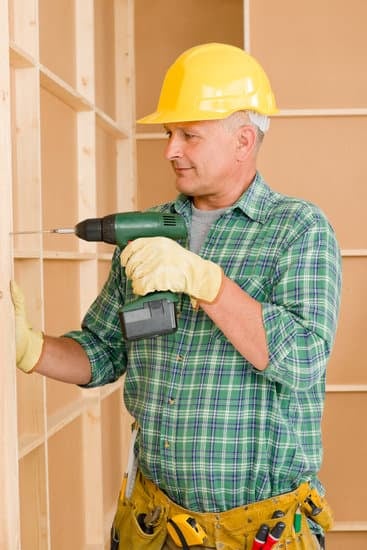What types of loans are available for home improvements? As you embark on your home improvement journey, it is important to understand the various financing options available to you.
From personal loans to home equity loans, there are a number of ways to fund your renovation projects. In this article, we will explore the different types of loans that are available for home improvements, providing you with the information you need to make an informed decision about the best loan option for your specific needs.
Home improvement projects can be costly, and sometimes homeowners may not have the necessary funds readily available. This is where home improvement loans come into play, offering a solution to finance renovations, repairs, or upgrades. Whether you are looking to remodel your kitchen, add a new bathroom, or make energy-efficient upgrades, understanding the different types of loans available can help you determine the best way to finance your home improvement endeavors.
In this comprehensive guide, we will discuss various loan options such as personal loans, home equity loans, FHA Title 1 Loans, cash-out refinancing, and more. Each loan type has its own pros and cons and is suited for different financing needs. By examining each option in detail, you will gain a better understanding of which loan may be right for you and your specific home improvement goals.
Personal Loans
When it comes to financing home improvement projects, personal loans can be a viable option for homeowners. Unlike home equity loans or lines of credit, personal loans are unsecured, meaning they do not require any collateral such as a home or property. This makes them a popular choice for individuals who may not have enough equity in their homes to qualify for other types of loans.
Personal loans for home improvements are typically based on the borrower’s creditworthiness and ability to repay the loan. Lenders will consider factors such as credit score, income, and existing debt when determining eligibility and loan terms. Borrowers with good credit may qualify for lower interest rates and better loan terms, making personal loans an attractive option for those looking to fund smaller renovation projects.
One of the advantages of using a personal loan for home improvements is the quick access to funds. Unlike some other types of loans which may involve lengthy approval processes, personal loans can often be approved and funded within a few days.
Home Equity Loans
When considering home improvement projects, it is essential to understand the various types of loans available for financing. One popular option is a home equity loan, which allows homeowners to leverage the equity they have built in their homes. Here are some key points to consider when exploring home equity loans for major renovation projects:
- Fixed Interest Rates: Home equity loans typically offer the advantage of fixed interest rates, providing borrowers with predictability and stability in their monthly payments.
- Lump Sum Payment: With a home equity loan, borrowers receive a lump sum of money upfront, which can be beneficial for large-scale renovation projects with substantial upfront costs.
- Longer Repayment Terms: Home equity loans often come with longer repayment terms compared to personal loans, spreading out the cost of renovations over a more extended period.
Homeowners interested in pursuing a home equity loan for major renovation projects should carefully assess their financial situation and long-term goals. It is essential to consider factors such as current mortgage rates, the amount of equity available in the home, and the potential impact on overall financial stability.
Before committing to a home equity loan, homeowners should also explore alternative options and compare different loan products to determine which one best suits their specific needs and circumstances. Additionally, consulting with a financial advisor or mortgage specialist can provide valuable insights into making an informed decision regarding home improvement financing.
By thoroughly researching and understanding the various types of loans available for home improvements, homeowners can make confident and well-informed choices that align with their renovation goals while maintaining financial security.
Home Equity Line of Credit (HELOC)
A Home Equity Line of Credit (HELOC) can be a great financing option for homeowners who have ongoing home improvement needs. With a HELOC, you can borrow against the equity in your home and use the funds as needed for various projects. Here are some key benefits of using a HELOC for home improvements:
- Flexibility: One of the main advantages of a HELOC is that it provides flexibility in terms of accessing funds. Unlike a traditional loan where you receive a lump sum upfront, with a HELOC, you can borrow as much or as little as you need, up to your credit limit, and pay interest only on the amount you actually use.
- Low-interest rates: HELOCs typically offer lower interest rates compared to personal loans or credit cards, making it an attractive option for financing home improvement projects.
- Tax-deductible interest: In some cases, the interest paid on a HELOC may be tax-deductible if the funds are used for home renovations. It’s important to consult with a tax advisor to understand the specific tax implications.
It’s important to carefully consider whether a HELOC is the right choice for your home improvement needs. While it offers flexibility and potentially lower interest rates, there are also risks involved, such as fluctuating interest rates and the possibility of losing your home if you’re unable to make payments. Before deciding on a HELOC, weigh the pros and cons and compare it with other loan options available.
Ultimately, choosing the right loan option for your home improvement project depends on your specific financial situation and renovation needs. Whether it’s a personal loan, home equity loan, FHA Title 1 loan, cash-out refinance, or energy-efficient mortgage (EEM), each option has its own advantages and considerations to take into account before making a decision.
Researching and understanding what types of loans are available for home improvements is essential in order to make an informed choice that aligns with your goals and circumstances.
FHA Title 1 Loans
When it comes to financing home improvement projects, FHA Title 1 loans are a popular option for homeowners. These government-backed loans are designed specifically for home improvements and can be used for both small and large renovation projects. One of the key advantages of FHA Title 1 loans is that they do not require equity in the home, making them accessible to a wider range of homeowners.
FHA Title 1 loans are available through approved lenders and have flexible eligibility requirements, making them a viable option for homeowners who may not qualify for traditional home equity loans. Additionally, these loans can be used for a variety of purposes, including structural alterations, repairs, and energy efficiency improvements. This makes them a versatile choice for homeowners looking to make upgrades to their properties.
It’s important to note that while FHA Title 1 loans offer several benefits, including low interest rates and longer repayment terms, they do have certain limitations. For example, there is a maximum loan amount that varies depending on the type of property and the region.
Additionally, borrowers should be aware that these loans are unsecured, meaning they do not require collateral such as home equity. As with any financial decision, it’s essential to carefully consider your options and choose the loan type that best suits your specific needs.
Overall, FHA Title 1 loans provide an attractive financing option for home improvement projects, particularly for those who may not have significant equity in their homes or who are seeking larger loan amounts without using their property as collateral. With its government backing and flexibility in use, FHA Title 1 loans are certainly worth considering when exploring what types of loans are available for home improvements.
Cash-Out Refinance
A cash-out refinance is a type of loan that allows homeowners to tap into the equity of their home to finance home improvement projects. This option involves refinancing your current mortgage for an amount greater than what you currently owe, and receiving the difference in cash. This can be a good choice for homeowners who have built up significant equity in their home and are looking to make substantial renovations or improvements.
How It Works
When you choose a cash-out refinance, you essentially take out a new mortgage that is larger than your existing one. The difference between the two amounts is given to you in cash, which can then be used to fund your home improvement projects. It’s important to note that this means you will have a higher loan balance and potentially higher monthly payments, so it’s crucial to carefully consider whether this is the right option for you.
Pros and Cons
One of the main advantages of a cash-out refinance is that it typically offers lower interest rates compared to other types of loans, such as personal loans or credit cards. Additionally, the interest on the amount borrowed may be tax-deductible, making it a potentially cost-effective financing option. However, it’s important to consider that by tapping into your home’s equity, you are essentially using your property as collateral.
This means that if you are unable to make the payments, you could risk losing your home. It’s essential to weigh the pros and cons before deciding if a cash-out refinance is right for your home improvement financing needs.
Energy Efficient Mortgages (EEM)
Energy Efficient Mortgages, also known as EEMs, are a great financing option for homeowners who want to make environmentally friendly upgrades to their homes. These loans are specifically designed to help homeowners finance energy-efficient improvements such as solar panels, energy-efficient windows, insulation, and more. With the growing focus on sustainability and reducing carbon footprints, EEMs have become an attractive option for many homeowners looking to make eco-friendly home improvements.
Overview of Energy Efficient Mortgages (EEMs)
EEMs are backed by the Federal Housing Administration (FHA) or the Department of Veterans Affairs (VA), making them a government-backed loan option for qualified borrowers. These mortgages allow homeowners to finance the cost of energy-efficient improvements into their mortgage without increasing their down payment. This means that borrowers can make these upgrades without having to come up with additional funds out of pocket.
Qualifying for an Energy Efficient Mortgage
To qualify for an EEM, borrowers will need to have a home energy assessment or audit conducted by a qualified energy rater. This assessment will determine the potential energy savings from the proposed improvements and is used to calculate the additional amount that can be added to the mortgage. Additionally, borrowers will need to meet certain eligibility requirements set by the FHA or VA in order to be approved for an EEM.
Benefits of Energy Efficient Mortgages
One of the main benefits of EEMs is that they allow homeowners to finance environmentally friendly upgrades at a low cost. In addition, making energy-efficient improvements can lead to long-term savings on utility bills while also reducing carbon emissions and environmental impact. By taking advantage of this financing option, homeowners can not only improve their property but also contribute to a more sustainable future for our planet.
Conclusion
In conclusion, when it comes to financing home improvement projects, there are various loan options available to homeowners. With personal loans, home equity loans, HELOCs, FHA Title 1 loans, cash-out refinances, and EEMs, individuals have a range of choices to consider based on their specific needs and financial situations. When determining the best loan option for home improvement needs, it is important to carefully evaluate factors such as interest rates, repayment terms, and the overall cost of the loan.
It is essential for homeowners to thoroughly assess their financial capabilities and consider their long-term plans before deciding on a loan option. Understanding the differences between each type of loan can help individuals make an informed choice that aligns with their budget and goals for their home improvement project. Additionally, seeking professional guidance from financial advisors or mortgage experts can provide valuable insights and aid in making the right decision.
Ultimately, whether it’s a minor renovation or a major overhaul of a property, choosing the right financing option is crucial for successful home improvements. By taking the time to research and compare different types of loans available for home improvements, homeowners can make a well-informed decision that suits their specific needs while ensuring that their project is completed within budget and with minimal financial strain.
Frequently Asked Questions
What Is the Typical Term for a Home Improvement Loan?
The typical term for a home improvement loan can vary depending on the lender and the specific loan program. However, most home improvement loans have terms ranging from two to seven years.
What Is the Minimum Credit Score for a Home Improvement Loan?
The minimum credit score required for a home improvement loan also varies depending on the lender and the type of loan. Generally, a credit score of 620 or higher is considered good enough for securing a home improvement loan.
What Type of Loans Do Lenders Give to Finance the Addition of Improvements to Property?
Lenders offer various types of loans to finance the addition of improvements to property, including home equity loans, home equity lines of credit (HELOC), personal loans, and government-backed FHA Title I loans. Each type of loan has its own eligibility requirements and terms that borrowers must consider before choosing one.

I’m thrilled to have you here as a part of the Remodeling Top community. This is where my journey as an architect and remodeling enthusiast intersects with your passion for transforming houses into dream homes.





